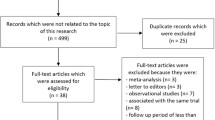Abstract
We investigated the clinical and economic impact of sirolimus-eluting coronary stents (SES) at a nationwide level as to advice about the feasible reimbursement policy for the Italian Health Care System (SSN). A decision model compared bare metal stents (BMS) and SES in terms of costs and repeat coronary revascularizations incurred in 12 months following the first revascularization. The model was compiled for eight subgroups of patients. Rates of events were derived from randomized trials and an 1,809-patient survey. National charges were used to evaluate resources consumption. Compared with BMS, the number of averted revascularizations with SES is 0.16 per patient. SES also save €1,371 per patient. Total savings to SSN are proportional to the rate of SES adoption by Italian hospitals: assuming a complete replacement of BMS with SES, the model estimates that 7,095 revascularizations would be averted and more than €60 million saved by the SSN in 1 year. To stimulate SES adoption a SES-specific DRG might by introduced with a reimbursement value 23% higher than the current charge. SES is thus a cost-saving strategy in the perspective of the SSN that could therefore support the introduction of the new technology by reimbursing about 80% of its current incremental acquisition cost.



Similar content being viewed by others
References
Abizaid AC (2002) Sirolimus for in-stent restenosis: final Sao Paulo and Rotterdam pooled results and lessons learned. http://www.tctmd.com
Abizaid A, Costa M, Centemero M et al. (2001) Clinical and economic impact of diabetes mellitus on percutaneous and surgical treatment of multivessel coronary disease patients. Circulation 104:533–538
Anderson HV, Shaw RE, Brindis RG et al. (2002) A contemporary overview of percutaneous coronary interventions. The American College of Cardiology-National Cardiovascular Data Registry (ACC-NCDR). J Am Coll Cardiol 39:1096–1103
Banz K, Schwicker D (1997) Cost-effectiveness of Palmaz-Schatz feminine stenting for patients with coronary artery disease in Italy. Invasive Cardiol 9 [Suppl A]:29A–34A
Galanaud JP, Delavennat J, Durand-Zaleski I (2002) A break-even price calculation for the use of sirolimus-eluting stents in angioplasty. Clin Ther 25:1007–1016
Greenberg D, Bakhai A, Cohen DJ (2003) Do benefits of new technology outweigh the costs? The case of drug-eluting stents. J Drug Deliv 1:255–266
Greenberg D, Cohen DJ (2002) Examining the economic impact of restenosis: implications for the cost-effectiveness of an antiproliferative stent. Z Kardiol 91 [Suppl 3]:137–143
Holmes DR, Leon MB, Moses JW et al. (2004) Analysis of 1-year clinical outcomes in the SIRIUS trial: a randomized trial of a sirolimus-eluting stent versus a standard stent in patients at high risk for coronary restenosis. Circulation 109:634–640
Morice MC, Serruys PW, Sousa JE et al. (2002) A randomised comparison of a sirolimus-eluting stent with a standard stent for coronary revascularization. N Engl J Med 346:1773–1780
Morice M-C, Serruys P, Costantini C et al. on behalf of the RAVEL Trial Investigators (2003) Two-year follow-up of the RAVEL study: a Randomized study with the sirolimus-eluting Bx vELOCITY (tm) stent in the treatment of patients with de novo native coronary artery lesions. Presented at the American College of Cardiology Meeting, abstract 805–1
Pell JP et al. (2001) Outcomes following coronary artery bypass grafting and percutaneous transluminal coronary angioplasty in the stent era: a prospective study of all 9890 consecutive patients operated on in Scotland over a two year period. Heart 85:662–666
Serruys PW, Unger F, Sousa JE et al. (2001) Comparison of coronary-artery bypass surgery and stenting for the treatment of multivessel disease. N Engl J Med 344:1117–2114
Serruys PW, van Hout B, Bonnier H et al. (1998) Randomised comparison of implantation of heparin coated stents with balloon angioplasty in selected patients with coronary artery disease (Benestent II). Lancet 352:673–681
Cutlip DE, Chauhan MS, Baim DS et al. Clinical restenosis after coronary stenting: perspectives from multicenter clinical trials. J Am Coll Cardiol 40:2082–2089
Sousa JE, Costa MA, Sousa AG et al. (2003) Two-year angiographic and intravascular ultrasound follow-up after implantation of sirolimus-eluting stents in human coronary arteries. Circulation 107:381–283
Schofer J, Schluter M, Gershlick AH et al. (2003) Sirolimus-eluting stents for treatment of patients with long atherosclerotic lesions in small coronary arteries: double-blind, randomised controlled trial (E-SIRIUS). N Engl J Med 362:1093–1099
Acknowledgements
The present study was carried out at Bocconi University and HEDM and was sponsored by Cordis Italia and Cordis Europe. The authors are grateful to the cardiologists that provided us with the survey data: Paolo Ravagnani and Antonio Bartorelli (Ospedale Cardiologico Monzino, Milan), Giulio Guagliumi (Spedali Riuniti, Bergamo), and Leonardo Bolognese (Ospedale Careggi, Florence).
Conflict of interest:
No information supplied
Author information
Authors and Affiliations
Corresponding author
Rights and permissions
About this article
Cite this article
Tarricone, R., Marchetti, M., Lamotte, M. et al. What reimbursement for coronary revascularization with drug-eluting stents?. Eur J Health Econ 5, 309–316 (2004). https://doi.org/10.1007/s10198-004-0258-x
Issue Date:
DOI: https://doi.org/10.1007/s10198-004-0258-x




